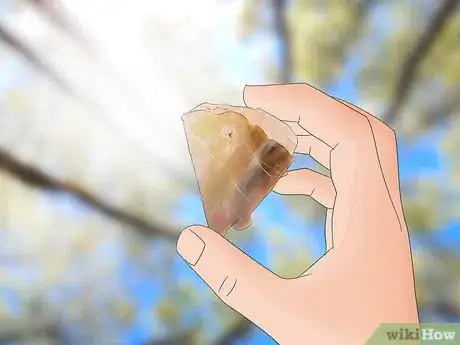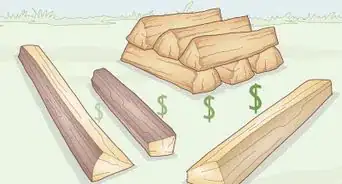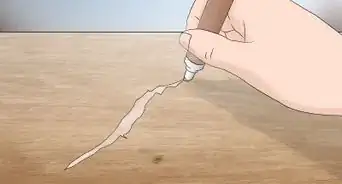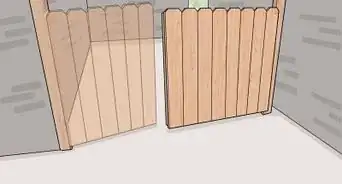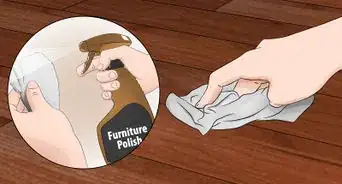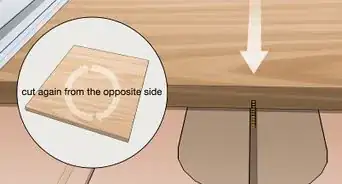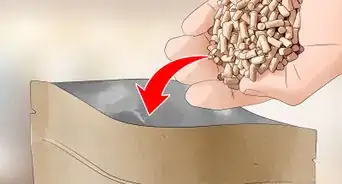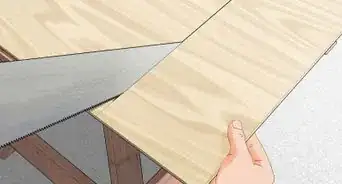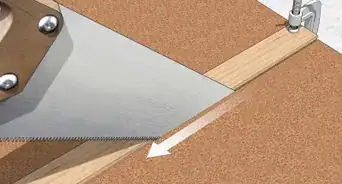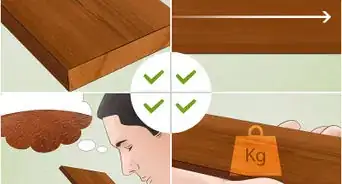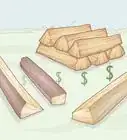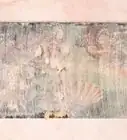This article was co-authored by wikiHow Staff. Our trained team of editors and researchers validate articles for accuracy and comprehensiveness. wikiHow's Content Management Team carefully monitors the work from our editorial staff to ensure that each article is backed by trusted research and meets our high quality standards.
There are 8 references cited in this article, which can be found at the bottom of the page.
This article has been viewed 115,449 times.
Learn more...
If you've ever been hiking and discovered a unique gemstone that looks like wood and feels like a rock, you've probably stumbled upon petrified wood! These fossils used to be wood but, over millions of years, turned into gemstones after their organic materials were replaced by minerals such as quartz while retaining the original stem tissue structure. Lucky for you, there are plenty of different kinds of petrified wood and lots of tips that can help you identify them.
Steps
Determining if Your Specimen is Petrified Wood
-
1Look for smooth textures in wood-colored specimens. The petrified wood that is easiest to identify has smooth, curvy sections that are often a brownish bark color. Run your hands across these portions and if they're smooth, it's the first sign that you've found petrified wood.[1]
- Keep an eye out for little bits of sap or sap-like colors like red (often strong reds), orange, and tan around the smooth parts.
- Smooth sections are often 3 to 5 inches (7.6 to 12.7 cm) in length.
- If the specimen has no bark but looks and feels like wood, it's probably petrified. Feel for jagged textures that could indicate the region where the specimen broke off from its tree.[2]
-
2Hold the piece up to light to check for transparency. Many pieces of petrified wood are transparent. If you have a bark-colored piece that you aren't certain of, hold it up to the light—if you can see through parts of it, that's another sign that it's petrified wood![3]
- Check to see if you can see your finger's shadow through the transparent portions of the piece.
Advertisement -
3Check for thick portions of white in the specimen. The thick portions of white in some pieces of petrified wood are the result of sap drying out. Often, these portions are about 1⁄2 inch (1.3 cm) thick. If these sap-like portions are located alongside smooth bark-like regions and red, orange, and tan colors, it's even more likely that your specimen is petrified wood.[4]
- Hold the white sap portion to the light and check for transparency.
- Run your hand along the wood to check for smooth portions.
-
4Look for circular, grainy, and bark-like patterns. If the original cell structure is destroyed due to petrification, you probably won't be able to identify the wood. Use your naked eye to look for patterns—circles, grains (straight or crossed), and anything that resembles bark. If you spot any patterns at all, the cell structure is probably intact and the piece can be identified.[5]
- Look for other trees growing in the area you found the specimen. Take note of common patterns in their wood and try to spot them in your specimen.
- Check for growth rings, which are the concentric circles that define wood.
Using a Magnifying Lens or Microscope
-
1Check for small round cells or rod-shaped vessels. Each type of wood contains cells—known as tracheids—that form different patterns. While some are visible at as low as 10x magnification with a magnifying glass, others require up to 800x with a microscope. Try starting low and moving up in intensity until you can get a feel for the type of cell structures in the wood. When looking for structures, move across the wood in a circular motion as you would when examining growth rings.[6]
- Conifer trees possess small, round cells arranged in straight lines.
- Angiosperms (walnut, oak, and sycamore) have vessels instead of cells. These are not always round and aren't organized into neat rows.
- Gingko trees have a unique cell formation similar to corn.
-
2Examine the thickness and variation of the rays. Rays are lines formed from small cells that run radially from the center of the tree to the edge of the bark. While some wood types possess thin rays—as little as 1 to 2 cells wide—others have thicker ones. In some cases, these rays exhibit variation in their widths. Take note of the rays in your petrified wood and compare them to the characteristics of different wood types.[7]
- Fruit-bearing trees typically have rays that are made from many different widths, both large and small.
- Pine trees have rays that are uniformly narrow.
- Keep in mind that rays are easier to see in hardwoods than softwoods.
-
3Look for resin ducts alongside cells and rays. Resin ducts are only found in evergreen trees and almost appear to be cells except for their large size. They are commonly found in pine, spruce, Douglas-fir, and larch trees.[8]
- Resin ducts are visible in pine without magnification. In other species, they are much smaller and only visible by magnification.
- Compare distinguishing features with cell structures and rays. For example, if you notice that your wood has rays that are straight and narrow in addition to resin ducts, you can conclude the wood is likely pine.
- If you can't spot any resin ducts, the specimen is likely a deciduous tree such as oak, maple, or beech.
-
4Identify trace elements of minerals by color. The hues in petrified wood aren't useful for determining specific minerals or tree species. However, they can be used to determine which trace elements are in your petrified wood. Take note of the colors present in your petrified wood and locate its corresponding element.[9]
- Black often indicates carbon presence.
- Blue or green shades are typically from copper, cobalt, or chromium.
- Yellow and blackish colors are often caused by manganese oxides.
- Orange and pink are due to manganese.
- Red, yellow, and brown shades are created by iron oxides.
Things You'll Need
- Magnifying lens
- Microscope
References
- ↑ https://youtu.be/7VR6W_pJnGI?t=38
- ↑ https://youtu.be/7VR6W_pJnGI?t=249
- ↑ https://youtu.be/7VR6W_pJnGI?t=137
- ↑ https://youtu.be/7VR6W_pJnGI?t=165
- ↑ https://sciencing.com/identify-types-petrified-wood-8150213.html
- ↑ https://www.fpl.fs.fed.us/documnts/fplgtr/fplgtr190/chapter_03.pdf
- ↑ https://www.tboake.com/2014/172-Structure_and_prop-2016.pdf
- ↑ https://www.fpl.fs.fed.us/documnts/fplgtr/fplgtr190/chapter_03.pdf
- ↑ http://www.gemcoach.com/types-of-petrified-wood/

